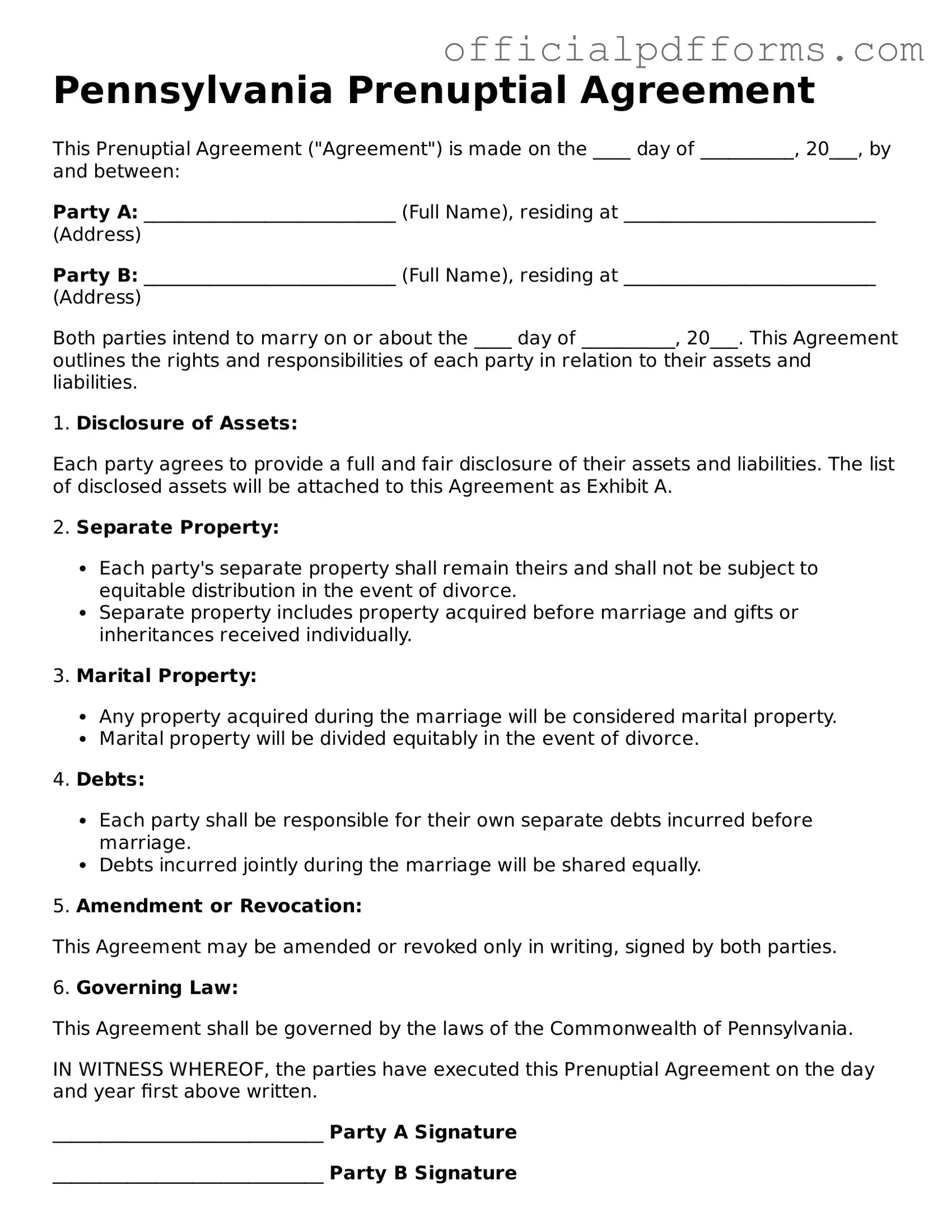Printable Pennsylvania Prenuptial Agreement Template
A Pennsylvania Prenuptial Agreement form is a legal document that outlines how a couple's assets will be divided in the event of a divorce. This agreement can help protect individual property and clarify financial responsibilities. To get started on your own agreement, fill out the form by clicking the button below.
Access Form Online
